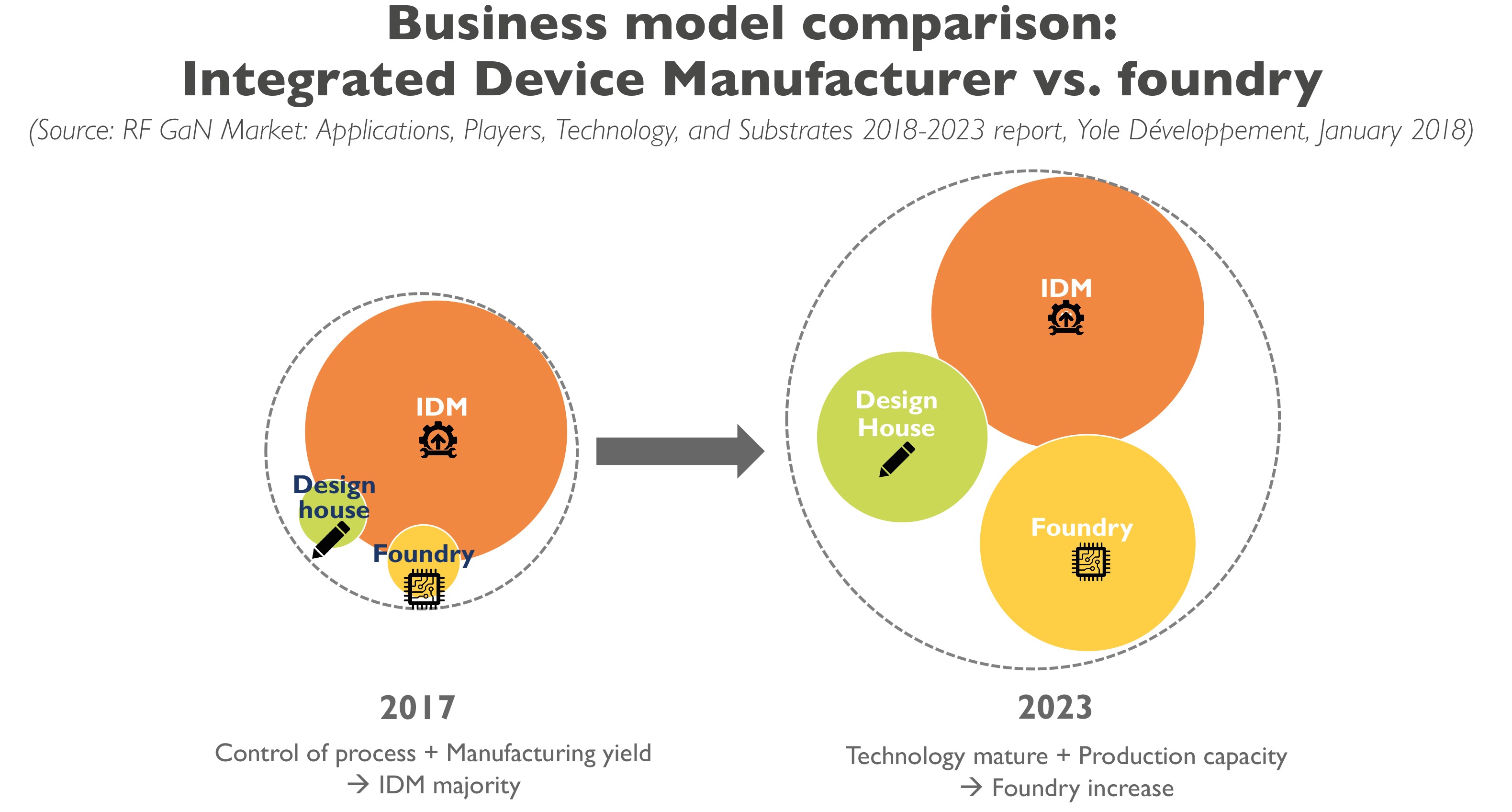RF GaN market will be boosted by 5G

Market size will be a factor of 3.4 larger by the end of 2023, posting a 22.9 percent CAGR from 2017-2023, says Yole
In the last couple of years, the RF GaN market experienced an impressive growth and has reshaped the RF power industry landscape. By the end of 2017, the total RF GaN market was close to $380 million, according to Yole Développement (Yole) in a new report titled 'RF GaN Market: Applications, Players, Technology, and Substrates 2018-2023'.
According to the analysts, the penetration rate in various markets, and in particular telecom and defence applications, had a breakout period in the last two years: CAGR in these two markets is more than 20 percent.
Yole says that another strong boost will occur around 2019"“2020, led by the implementation of 5G networks. The total RF GaN market size will be a factor of 3.4 larger by the end of 2023, posting a 22.9 percent CAGR from 2017-2023"¦
Yole's RF GaN market report describes GaN's presence and development in different markets, including wireless infrastructure, defence and aerospace, satellite communication, wired broadband, both in coaxial cables used in cable TV (CATV) and fibre-to-the-home, and other industrial, scientific and medical radio band applications. It also offers a complete analysis covering different emerging GaN players: Sumitomo Electric, Wolfspeed, Qorvo, These companies and more are part of Yole's study.
2017 has been undoubtedly a good year. Recognised by the industrial players, the RF GaN technology is becoming the current mainstream within the RF industry. Mostly dominated by the IDM companies, Sumitomo, Qorvo and Cree, the industry is at a critical stage. Tomorrow might be different with the penetration of the foundries.
Since Yole's previous technology and market report, there has been the failed acquisition of Wolfspeed by Infineon. Wolfspeed is now reintegrated into Cree's business. Also, Ampleon announced an acquisition offer by a Chinese LED company, named Aurora Sapphire. This company is a competitor of San'an Optoelectronics. In addition, companies like M/A-COM and Sumitomo have begun using silver sintering as the die attach material, it helps thermal control and improves the device quality. It's been confirmed that the next step will be using pure copper as flange material for the package.
In the coming years, Yole Développement sees telecom and defence markets acting as the mainstay of the industry.
The telecom market, thanks to the increasing development pace of 5G networks, will bring a huge opportunity for GaN devices beginning in 2018. Compared to existing silicon LDMOS and GaAs solutions, GaN devices are able to deliver the power/efficiency level required for next generation high frequency telecom networks. Also, GaN's broadband capability is one of the key elements for enabling important new technologies, such as multi-band carrier aggregation. GaN HEMTs have been the candidate technology for future macro base station power amplifiers.
Yole Développement estimates most sub-6GHz macro network cell implementation will use GaN devices because LDMOS can no longer hold up at such high frequencies and GaAs is not optimum for high power applications. However, because small cells do not need such high power existing technology like GaAs still has advantages. At the same time, market volumes will increase faster because higher frequencies reduce the coverage of each base station, and thus more transistors will be implemented.
The defence market has been the major driving force for GaN development in the past decades. Originating in the US Department of defence, GaN devices have been implemented in new generation aerial and ground radars. GaN's high power capability improves detection range and resolution, and designers are becoming increasingly familiar with this new technology.
Nevertheless, this military-related technology is very sensitive. And as GaN devices are becoming popular in defence applications, the development of the nonmilitary part could be affected. This is especially true in terms of mergers and acquisitions. Governments could block deals if businesses target military applications, as in Aixtron's acquisition by FGC Investment Fund, or Wolfspeed's by Infineon.
"GaN RF has been recognised by the industry and has become mainstream", says Zhen Zong, technology and market analyst at Yole. "Indeed, leading players are increasing revenue very rapidly and this trend will remain for the next several years."
GaN transistor prices are still relatively high today. According to Yole's analysts, in the near future, more and more players should penetrate the market ensuring volumes increase and prices decrease.
In parallel, Yole highlights significant issues related to the packaging. An effort in packaging could also strongly bring price reduction to an attractive level. Today, more players are choosing a plastic package: the industry is showing some movement on new types of packaging material and new die attach methods.
With important R&D investments, new packaging technologies in the package material and die attach will be more frequently used in higher-frequency and higher-power applications. "Indeed, we believe it will help reduce the price and ameliorate the performance", explains Zong from Yole. The GaN industry will grow in the coming years. Existing market leaders will no doubt increase their revenue, but likely not their market share.


































